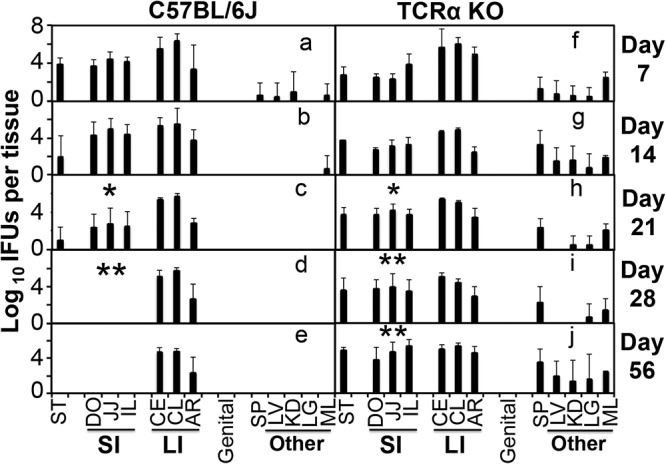FIG 2.

Chlamydia muridarum colonization in the gastrointestinal tract of mice deficient in α/β T cells. Mice without (a to e) or with deficiency in the T cell receptor alpha gene (TCRα KO [f to j]) were intragastrically inoculated with Chlamydia muridarum at 2 × 105 IFU per mouse. On days 7, 14, 21, 28, and 56 after infection, as indicated on the right side of each panel, groups of 3 to 5 mice were sacrificed for monitoring live chlamydial organisms in various tissues, including stomach, segments of small intestine such as duodenum (DO), jejunum (JJ), and ileum (IL), large intestine tissues such as cecum, colon, and anorectum, genital tract tissue, and other tissues, such as spleen, liver, kidney, lung, and mesenteric lymph node, as indicated on the x axis. The number of live organisms recovered from each tissue sample was expressed as log10 IFU. Note that C57BL/6J mice showed significantly reduced IFU in small intestine by day 21 and cleared IFU by day 28, while TCRα KO mice maintained significant levels of small intestine IFU throughout the experiment. The large intestine IFU remained steadily high in both strains. *, P < 0.05; **, P < 0.01 (Wilcoxon, panel c versus panel b, panel d versus panel b, panel h versus panel c, panel i versus panel d, and panel j versus panel e). Data were acquired from 3 independent experiments.
